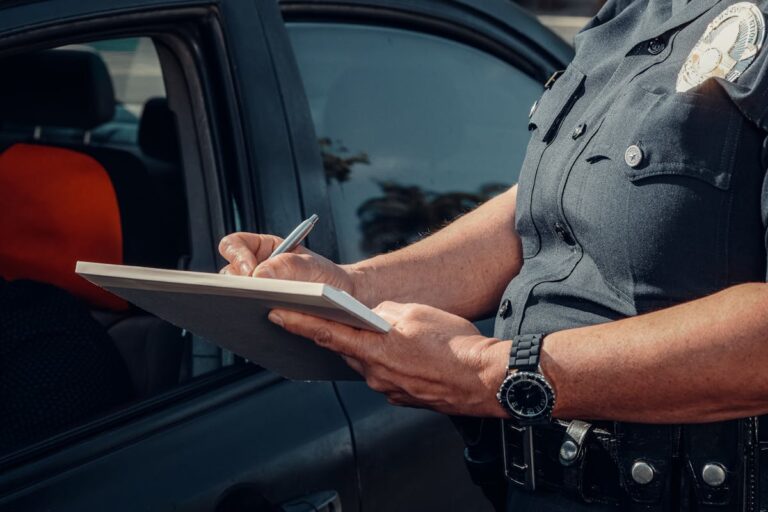How to Pass a DMV Inspection After Modifications
Maneuvering through the Department of Motor Vehicles (DMV) inspection process after modifying your vehicle can be a complex task, often laden with intricate details and legal stipulations. While modifications can enhance a vehicle’s performance and aesthetic appeal, they may also invite scrutiny during an inspection. The key is understanding the regulations and guaranteeing that your changes are within acceptable legal limits. So, how can one guarantee that their modified vehicle passes the DMV inspection without any hitches? It’s time we unravel this subject.
Understanding DMV Inspection Requirements
Regularly confirming your vehicle meets the stipulated Department of Motor Vehicles (DMV) inspection requirements is a mandatory aspect of vehicle ownership in many states. This DMV regulations overview is designed to provide a thorough perspective on these requirements, while also addressing specific vehicle modification laws.
DMV inspection requirements are primarily instituted to promote road safety and environmental compliance. They encompass a wide category of vehicle components such as the braking system, lights, tires, and emissions system, amongst others. It is vital for vehicle owners to familiarize themselves with these regulations to avoid penalties and guarantee their vehicles are in ideal operating condition.
The vehicle modification laws are a significant subset of these regulations. Owners must understand that any changes to their vehicle’s structure, systems, or features may necessitate a reinspection. This includes modifications to the vehicle’s exhaust system, engine, suspension, or bodywork. The objective is to make sure that these alterations do not compromise safety, environmental standards, or lawful operation on public roads.
Pre-Inspection Vehicle Checklist
As we navigate the process of passing a DMV inspection, it’s essential to understand that conducting a pre-inspection vehicle checklist is an integral step. This phase involves a thorough understanding of inspection requirements, careful preparation of modified vehicles, and efficient correction of common violations. Ensuring these areas are adequately addressed will greatly increase your chances of a successful DMV inspection.
Understanding Inspection Requirements
To guarantee a successful DMV inspection, it is vital to have an all-encompassing understanding of the inspection requirements. These requirements or inspection criteria can vary considerably by state, so it’s important to familiarize oneself with local laws and guidelines.
The DMV inspection process is designed to verify that vehicles are safe, functional, and in compliance with state-specific modification guidelines. The most common areas of scrutiny include the vehicle’s emission system, brakes, tires, lights, steering, suspension, and seatbelts. All these components must meet or exceed the established standards, as safety is paramount.
While some states may allow certain modifications, others may not. For instance, window tinting, exhaust modifications, and suspension alterations are frequent areas of contention. It’s essential to understand the modification guidelines in your area to avoid failing the inspection.
Preparing Modified Vehicles
When preparing a modified vehicle for a DMV inspection, a thorough pre-inspection checklist serves as an invaluable tool. This list will guide you through the necessary steps to guarantee all modifications adhere to local and federal regulations, thereby guaranteeing modification legality.
Firstly, you should document all modifications made to your vehicle, including performance enhancements. This includes any changes to engine parts, exhaust systems, tires, or body modifications. Ascertain that these alterations meet the safety standards set by your local DMV.
Secondly, verify the functionality of all essential components such as the brake systems, lights, windshield wipers, and seatbelts. Even though these may not be directly related to your modifications, they are vital for passing the DMV inspection.
Thirdly, focus on your vehicle’s emission system. This is a common area where modified vehicles fail inspections. Confirm your vehicle meets the emission standards set by the Environmental Protection Agency (EPA). Modifications that reduce the emission levels of your vehicle are usually acceptable, while those that increase it may not be.
Finally, if your vehicle has undergone significant modifications, consider hiring a professional inspector for a pre-inspection. They can provide expert advice on potential issues that might arise during the DMV inspection.
Correcting Common Violations
Maneuvering the myriad of potential violations can be an overwhelming task for any vehicle owner, particularly those with modified vehicles. To guarantee modification compliance and inspection readiness, a thorough understanding of common violations and their corrective measures is essential.
Firstly, one of the most frequent violations pertains to illegal modifications. These can range from excessive window tinting to non-compliant exhaust systems. Corrective action often involves reversing the modification to meet local regulations, or replacing it with a compliant alternative.
Secondly, safety equipment violations such as malfunctioning seat belts, or impaired braking systems are also common. Regular maintenance checks, and replacing faulty parts can effectively rectify these issues.
Thirdly, lighting and signaling equipment often cause violations. Confirm you have working headlights, tail lights, brake lights and turn signals. Additionally, they must be of the correct color and brightness.
Lastly, emissions violations are a significant concern. A vehicle must meet the state’s emission standards to pass inspection. Regular servicing and tuning of the vehicle’s engine can help maintain its emission levels within the permissible limit.
Common Vehicle Modification Mistakes
The process of modifying vehicles often presents a labyrinth of potential missteps that can lead to failure during a DMV inspection. Most common among these pitfalls are the issues of overlooking legal modification limits, ignoring safety standards, and neglecting essential paperwork. These aspects will be our focus, providing a detailed examination of each to guarantee a thorough understanding and successful navigation through DMV inspections.
Overlooking Legal Modification Limits
Although many vehicle owners are drawn to the idea of modifying their cars for aesthetic or performance improvements, they often overlook the legal limitations imposed on such alterations. This oversight can lead to failed DMV inspections, hefty fines, and even the potential impounding of the vehicle.
Understanding and respecting the legal limits surrounding vehicle modifications is vital. These legal limits often vary by state and can encompass a range of modifications including engine alterations, bodywork changes, and lighting modifications. Modification restrictions are designed to guarantee that vehicles on the road meet certain safety and environmental standards. Ignoring these legal limits can result in modifications that make a vehicle illegal to operate on public roads.
Moreover, insurance companies may deny coverage if they discover unauthorized modifications on a vehicle, leaving the owner personally liable for any damages or injuries that occur. Modified vehicles may also be more prone to theft, further increasing potential liabilities.
Ignoring Safety Standards
Vehicle owners, in their quest to customize and enhance their cars, often disregard the safety standards set by regulatory bodies. This can be a grave mistake as these safety standards are not arbitrary; they are meticulously designed to guarantee vehicle integrity and protect the occupants of the vehicle.
One such standard pertains to the vehicle’s lighting system. Any modifications altering the visibility or color of headlights, taillights, or signal lights could potentially reduce safety, compromise vehicle integrity and result in non-compliance with safety regulations.
Another common area of non-compliance involves alterations to the exhaust system. Modifications that augment noise levels or pollutant emissions not only contravene safety standards but can also have adverse effects on the environment.
Suspension modifications, too, can pose serious safety risks if not appropriately done. Changes to ride height can alter the vehicle’s center of gravity, potentially making it unstable and unsafe.
Neglecting Essential Paperwork
Paperwork neglect, a frequent error among vehicle owners, can lead to serious complications when it comes to DMV inspections. Many owners focus solely on the physical aspects of their vehicles, overlooking the importance of maintaining and organizing essential documents. This oversight can result in missing documents, leading to failed inspections and potential legal issues.
Proper paperwork organization is vital, especially when modifications have been made to a vehicle. This includes keeping receipts for every modification, maintaining a detailed log of changes, and ensuring that all modifications meet local and federal regulations. Importantly, owners should keep copies of safety certificates, emissions reports, and any other documentation proving that the vehicle meets required standards.
Owners who fail to appropriately manage their administrative responsibilities run the risk of their vehicle being deemed non-compliant, regardless of the physical condition of the car. As a result, it is essential to prioritize paperwork as much as the vehicle modifications themselves. Missing documents can be a red flag to inspectors, and may result in fines, penalties, or the need for a re-inspection.

Navigating the Inspection Process
The road to a successful DMV inspection begins with a thorough understanding of the process. Familiarize yourself with the inspection criteria and guidelines by perusing your local DMV’s website or consulting with an agency representative. This will help you anticipate any potential issues related to modification legality, so you can resolve them prior to your appointment.
Inspection tips often suggest bringing all relevant documentation, including receipts for aftermarket parts or modifications. If you have made extensive modifications, consider seeking professional assistance in preparing your vehicle for inspection. This might involve ensuring your vehicle meets safety standards, adheres to emissions regulations, and satisfies any regional requirements.
Remember that each state has unique laws regarding vehicle alterations. While some modifications may be legal and pass inspection in one state, they might not in another. Consequently, understanding your state-specific laws is integral to ensuring your vehicle’s modifications are legally compliant.
Finally, be prepared for the possibility of re-inspection. In some cases, inspectors might require a second look at your vehicle, particularly if significant modifications have been made. Being prepared for this eventuality can save you time and stress, helping you navigate the DMV inspection process with confidence.
Addressing Failed Inspection Issues
In the event of a failed DMV inspection, it’s crucial to understand the reasons behind this outcome. While each state has its own specific requirements, common issues often revolve around failed emission tests and modification compliance.
Failed emission tests are typically the result of exhaust modifications or engine tuning that cause your vehicle to exceed the allowable pollutant levels. In such cases, you may need to reinstall the original components or make adjustments to bring your vehicle into compliance with the state’s emission standards.
Modification compliance, on the other hand, pertains to alterations that affect the safety and operability of your vehicle. These could involve changes to the suspension, braking system, or lighting, among others. If your vehicle fails due to non-compliant modifications, you’ll need to rectify these issues to meet the standard requirements.
It’s important to remember that even though modifications may enhance your vehicle performance or aesthetic appeal, they must still comply with safety and emission standards. Consequently, before making any changes to your vehicle, verify they are in line with your state’s DMV regulations to avoid failed inspection issues.
Legal and Safe Modifications Guide
Steering through the domain of vehicle modifications can be a complex process, given the strict regulations set by DMVs in different states. Modification legality and safety compliance are two primary aspects that must be kept in mind while planning any changes to your vehicle.
Legal modifications generally fall under categories such as aesthetic alterations, performance enhancements, and functional additions. Aesthetic changes like new paint jobs, decals, or body kits usually don’t affect a vehicle’s legality unless they obscure license plates or lights. Performance modifications, including engine tuning, exhaust upgrades, or suspension alterations need to adhere to emission standards and noise limitations. Functional additions, such as installing aftermarket accessories, need to follow safety compliance regulations to guarantee they don’t pose a hazard.
However, the specifics of what is allowed can vary widely between jurisdictions. Consequently, researching your state’s particular rules and regulations regarding vehicle modifications is vital to confirm compliance. Consult with a knowledgeable technician or legal expert if you’re unsure about a modification’s legality or safety compliance. Remember, a vehicle that doesn’t comply with DMV regulations can result in fines, impoundment or failed inspections. Thus, making informed decisions about modifications can save time, money, and potential legal troubles.
Tips for Successful DMV Inspection
Preparing for a DMV inspection is an essential step in maintaining your vehicle’s road-worthiness and legal compliance. Understanding inspection timelines is vital to guarantee you don’t miss your appointment, which may result in fines or penalties. Schedule your inspection as early as possible to avoid last-minute issues that could hinder the success of your inspection.
One of the common modification myths is that all modifications can hinder the passing of the inspection. While some modifications, like excessive window tinting or emission system alterations, can cause your vehicle to fail, others like cosmetic changes or audio system upgrades do not generally impact DMV inspection outcomes. It is important to research and understand the specific regulations in your state pertaining to vehicle modifications.
Verify your vehicle’s basic systems are functioning correctly. Check your vehicle’s lights, brakes, tires, and other safety features. Any malfunctions in these systems can cause an immediate fail. Have your vehicle professionally serviced if necessary.
Lastly, keep all receipts and documentation for all modifications made. This is significant because inspectors may need to verify that all modifications comply with state and federal laws. Remember, preparation is key to a successful DMV inspection.
Post-Inspection Procedures and Paperwork
What is the next step after successfully passing your DMV inspection? The subsequent phase involves meticulous adherence to post-inspection procedures and managing associated paperwork. These steps are important to finalize the legal status of your modified vehicle and should not be overlooked.
Post-inspection documentation primarily includes the inspection report, which confirms your vehicle’s compliance with state regulations. This document often contains detailed information about the modifications inspected and the resultant compliance status. Keep this report safe, as it is an essential part of your vehicle’s records and may be required for future reference.
Submission timelines, another significant aspect, determine when this paperwork should be submitted to the DMV. It is necessary to adhere to these deadlines to avoid unnecessary complications or potential fines. The specific timelines can vary by state, so make sure you are aware of your local DMV’s guidelines.
Frequently Asked Questions
Can I Do a Self-Inspection Before Attending the DMV Inspection?
Yes, conducting a self-inspection using a thorough checklist can be beneficial. Preparation tips include ensuring all modifications meet state regulations, testing lights, brakes, and emissions systems for functionality and safety compliance before the official DMV inspection.
What Are the Penalties for Not Passing the DMV Inspection?
Penalties for not passing the DMV inspection vary by state, but often include fines, license suspension, or vehicle impoundment. It’s essential to understand these inspection consequences to avoid potential penalties explained by local regulations.
How Often Do I Need to Get My Modified Vehicle Inspected by the DMV?
Inspection frequency for modified vehicles varies by state but generally, it is required annually. It is essential to maintain compliance with DMV standards, as vehicle modifications can greatly impact inspection outcomes. Check local regulations for precise information.
Can I Use a Mechanic of My Choice for Repair Work After a Failed Inspection?
Yes, you can select a mechanic of your choice for repair work after a failed inspection. However, make certain they’re certified and understand the specific DMV requirements to avoid repeated failures and unnecessary repair costs.
Does the DMV Inspection Also Evaluate the Efficiency of My Vehicles Modifications?
Yes, a DMV inspection critically evaluates the performance and efficiency of vehicle modifications. It guarantees that all modifications comply with safety standards and do not negatively impact the vehicle’s performance or environmental emissions.



